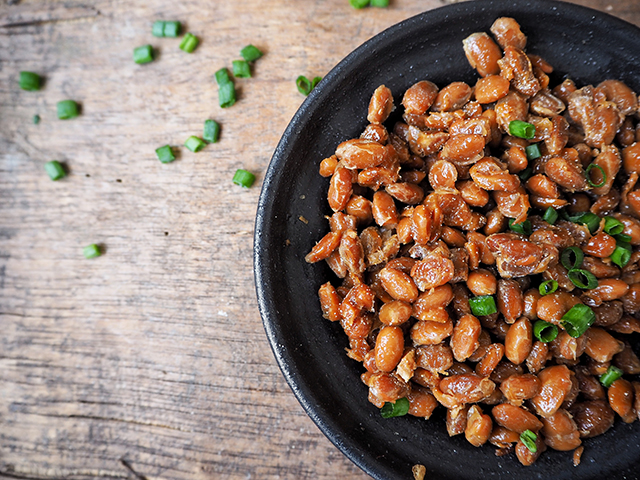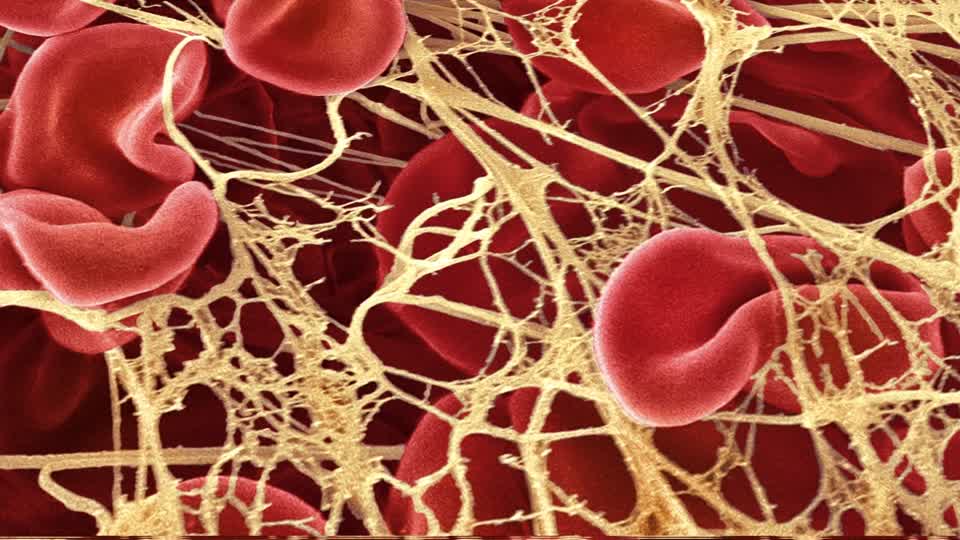
Natto is a food that is made by fermenting soybeans with a bacterium called Bacillus subtilis. Known for its strong smell, gooey texture and pungent flavor, the cheese-like food has long been used in traditional medicine in Japan for cardiovascular problems. Its secret is the anti-clotting enzyme that it contains known as nattokinase.
Several studies have confirmed this natural enzyme’s ability to dissolve blood clots, lower blood pressure, and improve circulation. It does this by breaking down a component found in blood clots and atherosclerotic plaque called fibrinogen; higher levels of fibrinogen are associated with a higher risk of cardiovascular disease. In addition, it has been shown to lower LDL, or bad cholesterol, while increasing HDL, or good cholesterol. It can also decrease the thickness of blood.
This food is an incredibly safe option compared to blood thinners and aspirin. Warfarin, for example, is commonly given to patients to thin their blood, even though its use has been linked with a spike in brain hemorrhages. Taking a daily aspirin, meanwhile, has been found to increase a person’s heart attack risk by a very concerning 190 percent.
Contrast this with nattokinase, which was found in a comprehensive safety assessment by NSF International to be of “low toxicological concern” after an analysis that included acute toxicity, a four-week clinical study using human volunteers, pathogenicity studies, and repeated dose studies using rodents.
In addition, natto is an excellent source of vitamin K2, which boosts bone health. Those who regularly eat natto have been found to have a higher bone mineral density and are less likely to experience bone loss.
According to Northwestern State University Molecular Biology Associate Professor Dr. Kevin Wang, just one natto bean is capable of dissolving the protein involved in blood clots known as fibrin.
This food’s popularity has been growing as the word spreads of its health benefits, but its distinctive flavor is standing in the way of widespread adoption and driving many people to take nattokinase supplements instead. If you find the taste of natto off-putting, consider adding it to curries or stir-fries or eat it with sliced green onions or pickled ginger. Always be sure to seek organic soybeans when making it yourself.
Other fermented foods also benefit health
Another traditional Japanese fermented food that has been in the spotlight for its health benefits is miso. With its rich and complex flavor, it’s prized by chefs around the world, while health-conscious people love it just as much for its ability to fight disease. Like natto, it’s made of fermented soybeans, and it is rich in vitamins like E, K, and B2, as well as calcium, potassium, lecithin, iron and choline. It works as a probiotic, strengthening the immune system, and is high in fiber and protein. The regular consumption of miso has been shown in studies to reduce a person’s risk of colon, breast, prostate and lung cancer.
Learn more about the science of healing foods at FoodScience.news.
Sources for this article include:
Please contact us for more information.























